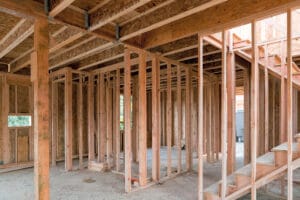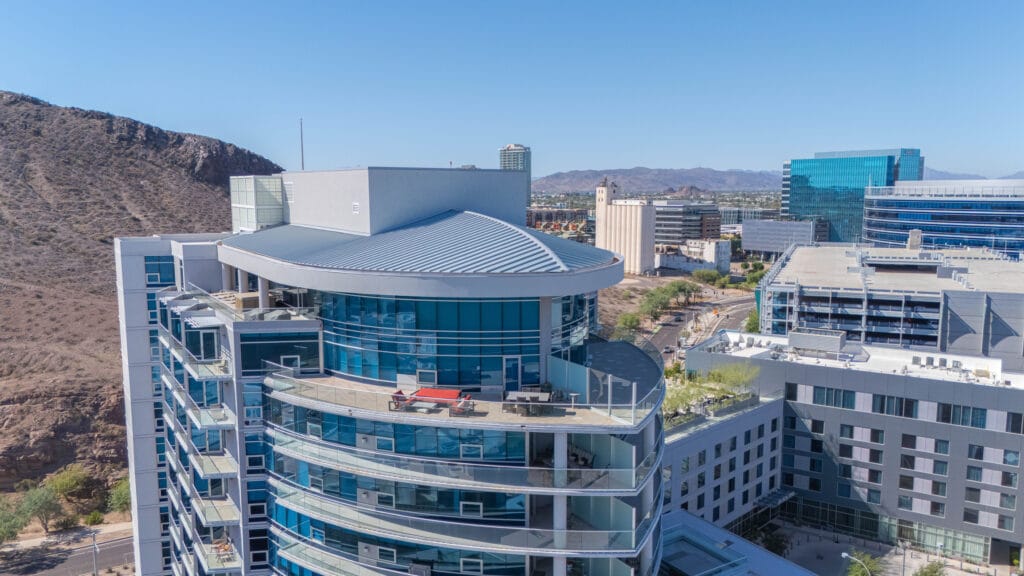When purchasing or maintaining a property in Arizona, understanding what an exhaustive home or building inspection entails can save you thousands of dollars and protect your investment from the unique challenges of the desert climate. This comprehensive guide, informed by the experts at Schembri Engineers, covers everything you need to know about exhaustive inspections in the Grand Canyon State. If you are looking for professional, state-certified evaluations, start with Schembri Engineers’ Certified Home & Property Inspection Services.
What Defines an Exhaustive Home or Building Inspection?
An exhaustive home or building inspection is a comprehensive visual evaluation of a property’s major systems, structure, and components. In Arizona, certified home inspectors conduct inspections to provide clients with a better understanding of property conditions as observed at the time of the inspection.
While the term “exhaustive” suggests thoroughness, it’s important to understand that inspections conducted in accordance with Arizona standards are visual, not technically exhaustive, and will not identify concealed conditions or latent defects.
The Scope of a Comprehensive Exhaustive Inspection
Arizona standards are applicable to buildings with four or fewer dwelling units and their garages or carports. An exhaustive inspection examines all accessible areas of your property, providing a snapshot of its current condition and identifying any deficiencies that may require attention.
The inspection process typically covers:
- Structural components and foundation
- Roofing systems and materials
- Exterior walls, siding, and trim
- Electrical systems and components
- Plumbing and water supply systems
- HVAC (heating, ventilation, and air conditioning) systems
- Interior spaces and finishes
- Insulation and ventilation
- Drainage and grading
- Doors, windows, and garage systems
Arizona-Specific Inspection Requirements
Regulatory Framework The Arizona State Board of Technical Registration (BTR) certifies and regulates the practice of home inspectors. To become certified in Arizona, inspectors must meet rigorous requirements:
The law requires 84 hours of education, successful completion of the National Home Inspector Examination, and evidence of successfully completed home inspections. Additionally, certified home inspectors must have Errors and Omissions Insurance in the amount of $\$200,000$ in the aggregate and $\$100,000$ per occurrence, or a $\$25,000$ bond, or an alternate financial assurance mechanism approved by the BTR with a value of at least $\$25,000$.
Standards of Practice A certified home inspector must conduct a home inspection in accordance with the Standards of Professional Practice adopted by the Arizona Chapter of the American Society of Home Inspectors, Inc. on October 27, 2023. These standards define exactly what inspectors must examine, how they should conduct their evaluations, and what they are not required to report.
Critical Areas in Your Exhaustive Building Inspection
1. Structural Systems and Foundation
The inspector evaluates the home’s structural integrity, examining:
- Foundation walls and footings
- Floor structure and support systems
- Wall framing and load-bearing components
- Ceiling and roof framing
- Signs of settlement or movement
Arizona’s expansive desert soils can cause significant foundation movement over time, making this a critical component of any exhaustive inspection. Inspectors look for cracks, shifting, and other indicators of structural stress common in the region.
2. Roofing System
Inspectors describe the type of roof covering materials and report the methods used to inspect roofing. The evaluation includes:
- Roof covering condition and remaining life
- Flashings and penetrations
- Drainage systems and gutters
- Ventilation components
- Signs of leaks or water intrusion
Arizona’s intense sun and occasional monsoon storms take a significant toll on roofing systems, making thorough roof evaluation essential for property buyers and owners.
3. Exterior Components
Inspectors examine wall cladding, flashings and trim, entryway doors and representative number of windows, garage door operators, decks, balconies, stoops, steps, areaways, and porches including railings, eaves, soffits and fascias, and vegetation, grading, drainage, driveways, patios, walkways and retaining walls with respect to their effect on the condition of the building.
In Arizona, special attention is paid to stucco exteriors, which are prevalent in desert construction and susceptible to thermal stress and monsoon damage.
4. Plumbing Systems
The inspection covers interior water supply and distribution system including piping materials, supports and insulation, fixtures and faucets, functional flow, leaks, and cross connections. It also evaluates interior drain, waste and vent system, including traps, drain, waste, and vent piping, piping supports and pipe insulation, leaks, and functional drainage.
The hot water system examination includes water heating equipment, normal operating controls, automatic safety controls, and chimneys, flues and vents.
5. Electrical Systems
Inspectors describe service amperage and voltage, service entry conductor materials, service type as being overhead or underground, and location of main and distribution panels. They also report any observed aluminum branch circuit wiring and the polarity and grounding of all receptacles within six feet of interior plumbing fixtures and all receptacles in the garage or carport, and on the exterior of inspected structures, plus the operation of ground fault circuit interrupters.
6. HVAC Systems
The heating, ventilation, and air conditioning systems receive thorough evaluation, including:
- Heating equipment type, capacity, and condition
- Cooling system components and performance
- Ductwork and distribution systems
- Thermostats and controls
- Air filters and ventilation
Given Arizona’s extreme heat, HVAC system condition is particularly critical for property value and livability.
7. Interior Components
Inspectors evaluate interior spaces for:
- Wall and ceiling condition
- Floor surfaces and structures
- Doors and windows operation
- Stairways and railings
- Fireplace and chimney systems
The inspection also covers insulation and vapor retarders in unfinished spaces and ventilation of attics and foundation areas.
What an Exhaustive Inspection Does NOT Cover
Understanding the limitations of a standard inspection is equally important. Inspectors are NOT required to report on life expectancy of any component or system, the causes of the need for a major repair, the methods, materials and costs of corrections, the suitability of the property for any specialized use, compliance or non-compliance with applicable regulatory requirements, the market value of the property or its marketability, the advisability or inadvisability of purchase of the property, any component or system which was not observed, or the presence or absence of pests such as wood damaging organisms, rodents, or insects.
Additional exclusions include:
- Walking on the roofing or observing attached accessories including solar systems, antennae, and lightning arresters
- Observing low voltage systems, smoke detectors, telephone, security, cable TV, intercoms or other ancillary wiring that is not a part of the primary electrical distribution system
- Paint, wallpaper and other finish treatments on interior walls, ceilings, and floors, carpeting, draperies, blinds or other window treatments, household appliances, or recreational facilities
Arizona’s Unique Climate Challenges
Arizona’s extreme desert environment creates unique challenges that impact property condition and inspection priorities. The state experiences temperature swings of $80$ degrees or more between summer highs exceeding $110^\circ \text{F}$ and winter lows in the $30$s. This thermal cycling stresses building materials and systems in ways uncommon in other regions.
Soil and Foundation Concerns
Arizona’s expansive clay soils and caliche present ongoing challenges for foundations. During dry periods, soil contracts away from foundations, and during monsoons, it expands. This cyclical movement can cause foundation shifting, cracking, and structural stress over time.
Proper grading and drainage are essential for protecting foundations from monsoon water intrusion. Inspectors pay particular attention to grading slopes, drainage pathways, and signs of water penetration near foundation walls.
Monsoon Season Impact
Monsoon season in Arizona, spanning from June to September, introduces sudden, intense weather patterns. High winds are notorious for dislodging roof tiles and scattering debris, leading to blocked drainage systems or damaged exteriors. Heavy rains are capable of overwhelming gutters and downspouts, leading to potential flooding and water damage.
Despite the generally dry climate, this seasonal moisture can lead to mold growth in vulnerable areas like attics, HVAC systems, and behind walls if proper drainage and ventilation are not maintained.
When to Schedule an Exhaustive Inspection
Home Purchase Inspections
The most common time for an exhaustive inspection is during the home-buying process, allowing buyers to:
- Identify potential problems before finalizing the purchase
- Negotiate repairs or price adjustments with the seller
- Make informed decisions about whether to proceed with the transaction
Pre-Listing Inspections
Sellers increasingly opt for pre-listing inspections to:
- Identify and address issues before listing the property
- Avoid surprises during buyer negotiations
- Demonstrate transparency and property care
New Construction Inspections
Even newly built homes benefit from a professional inspection to verify that work meets code requirements and to identify any issues before the builder’s warranty period expires.
The Inspection Report and Findings
Following the inspection, you’ll receive a comprehensive written report that includes:
- Detailed findings for each inspected system and component
- Photographs documenting conditions and deficiencies
- Descriptions of observed problems and their implications
- Recommendations for further evaluation by specialists when needed
Inspection reports typically classify findings into several categories: Safety Hazards, Major Defects, Minor Deficiencies, and Maintenance Items. After receiving your report, prioritize repairs based on safety concerns and issues affecting habitability or property damage prevention.
Choosing a Qualified Inspector in Arizona
Licensing and Certification
Always verify that your inspector holds current Arizona certification. To qualify for home inspector certification through the standard pathway, applicants must have been continuously certified by the Board as a Home Inspector for at least three years and have conducted at least 250 fee-paid home inspections in the State of Arizona.
Look for inspectors who:
- Hold current Arizona BTR certification
- Carry required errors and omissions insurance
- Have substantial experience with Arizona construction methods and climate challenges
Questions to Ask Prospective Inspectors
Before hiring an inspector, ask:
- How long have you been inspecting in Arizona?
- What is your experience with this type of property?
- Do you carry E&O insurance? What are the coverage limits?
- Can I attend the inspection?
Conclusion: Protecting Your Investment with an Exhaustive Inspection
An exhaustive home or building inspection is an essential step in Arizona property ownership, providing critical insights into your investment’s condition and helping you prepare for the unique challenges of desert living. Inspections provide clients with better understanding of property conditions, as observed at the time of the inspection, enabling informed decision-making about purchases, repairs, and maintenance.
By working with experienced inspectors who understand Arizona’s climate challenges, following through on recommended evaluations, and implementing appropriate maintenance practices, you’ll ensure your property remains safe, functional, and valuable for decades to come.





